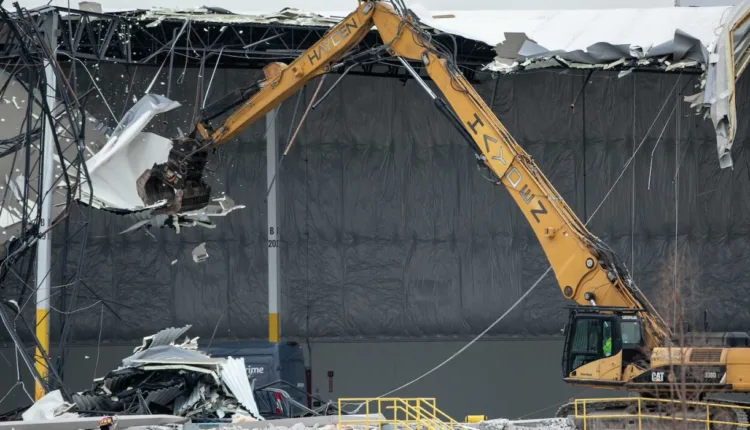
Sturdier Buildings to Save Lives and Money
TL/DR –
The federal government has made available a billion dollars to aid state and local governments in updating building codes. These modern codes aim to improve energy efficiency and resilience against climate impacts, as well as enhance insurability. According to one estimate, every dollar spent on code modernization can yield a tenfold return for communities by building safer and more sustainable spaces.
Governmental Investment into Modern Building Codes
The US government has set aside $1 billion to assist state and local governments in updating building codes. These modern codes not only augment energy efficiency, but also provide guidelines to enhance resilience against climate impacts. It has been estimated that every dollar invested into code modernization returns tenfold to communities, aiding the construction of safer, more sustainable environments.
State and local governments’ efforts to create efficient, safe, and resilient built environments has been significantly boosted with the allocation of $1 billion via the Inflation Reduction Act. The first $400 million round of applications was launched in September.
The significance of this federal investment stems from the fact that Americans, on average, spend 90 percent of their time indoors. The safety of the buildings they inhabit is determined by the construction standards enforced in each community. Despite increased focus on energy conservation, indoor air quality, and climate impacts, not all jurisdictions enforce the same building codes.
In contrast to the European Union, where Eurocodes establish building design and construction standards for all member countries, the US relies on building codes adopted at the local or state level, which are typically based on models developed by private organizations.
Advocacy and Opposition
While advocacy for code requirements relating to energy efficiency and “green building” strategies is increasing, opposition from the construction industry and some government entities cites cost concerns. These concerns are exacerbated by a worker shortage and heightened interest rates and material costs.
Historical Overview of Building Codes
The earliest building code efforts were initiated by the insurance industry in the early 20th century with the aim of making buildings more fire-resistant. Eventually, three regional organizations formed, each with their own model code. These merged in 1994 to form the International Code Council (ICC), which has since developed 18 model standards adopted by jurisdictions throughout the US and in over 100 countries worldwide.
ICC Advocation For Modern Building Codes
In an interview, ICC’s CEO, Dominic Sims, highlighted the importance of the Inflation Reduction Act’s billion-dollar allocation for the implementation of modern codes. Sims pointed out the risk reduction and health benefits of adhering to current codes and standards. He referenced a study by the National Institute of Building Sciences demonstrating that investing in building codes could save up to $11 per dollar invested in damage repairs. Sims emphasized the need to incorporate modern building codes in every community.
Sims also illuminated the growing significance of insurability in the context of code adoption, revealing that ICC works with Verisk, an organization that rates communities’ capabilities to implement and enforce building codes. Insurance companies then utilize this data to underwrite insurance or set premiums.
AI and Robotics in Construction
Looking ahead, Sims signaled the industry’s interest in artificial intelligence (AI), robotics, and off-site construction. These methods could reduce waste and overcome workforce challenges through factory manufacturing in controlled environments. He also mentioned the International Energy Conservation Code’s appendix on net-zero homes as an indicator of uptake in the net-zero space.
Finally, Sims stressed the importance of governmental proactivity in adopting current codes to ensure the safety of built environments.
—
Read More US Economic News
